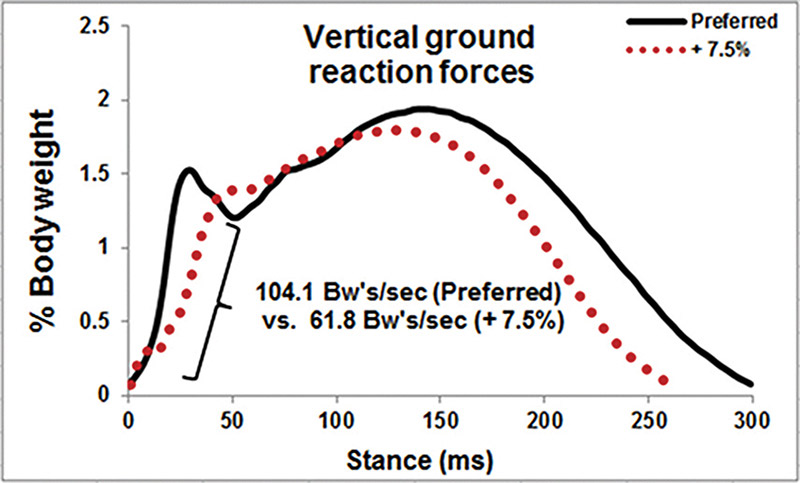Click here for this edition’s Table of Contents
Shock Absorption & Eccentric Control
1) Being able to attenuate force efficiently is extremely important. A loss in variability or efficiency in shock absorption can cause the forces to be absorbed in a maladaptive manner. #ConservationOfEnergy
2) Uncontrolled motion is always a problem. Especially at end-range. “Groups differed in ankle biomechanics, but not non-weight-bearing ROM or strength. During stair ascent, the IAT (insertional Achilles tendinopathy) group used greater end-range dorsiflexion (P = .03), less plantar flexion (P = .02), and lower peak ankle plantar flexor power (P = .01) than the control group”
3) Maybe better shock absorption is another reason why eccentric isometrics work so well?
4) Sometimes we know why someone has pain when they run without even looking at them. These are the patients we put on the treadmill and before we can even look it sounds like the Jurassic Park T-Rex scene. They sound like they’re trying to put their foot through the treadmill as if it owed them money. In other words, they’re not accepting force very gracefully. Their ground reaction force is not being attenuated efficiently. Their shock absorption sucks. One easy fix for this is to decrease the force. How do you do that? Think about it temporally. Spread the force over more area (i.e. more steps). Increase the cadence. It’s like running on all 4’s, except not. Maybe if there’s less force per step, the patient will have the capacity to efficiently absorb the force.
5) “Patellar tendon straps decrease pre-landing quadriceps activation in males with patellar tendinopathy” Maybe this is one of the reasons why these straps work anecdotally? But the force will have to be attenuated somewhere. Maybe the body figures it out? Maybe it’s forced to choose a better pattern? Just hope that they have variability in their movement.
6) Eccentric shock absorption is usually much more difficult than the concentric propulsion. Which may be why many people tend to skip training it or will compensate around it.
7) There are an infinite number of ways to compensate. Especially when fatigued. Maybe one of them is to avoid the energy expense of shock absorption? ITBS runners might be avoiding the global lower extremity pronation to avoid “wasting” energy on shock absorption. “Regardless, In the runners with ITBS, fatigue was associated with a mean peak hip adduction angle that was 3° smaller than in the uninjured runners, which translated to an 18.5% difference between the groups”.
8) Another study finding pain and injury lead to greater impact and poor shock absorption “Compared with the uninjured group, the CAI group had significantly higher impact peak forces and active peak forces, faster loading rate, and a shorter time to reach active peak force.”
9) Concussed athletes lost their ability to shock absorb proximally, “when the authors compared change in stiffness from preseason to postseason they found that the concussed athletes exhibited decreased stiffness at the leg and knee, and increased hip stiffness compared with the non-concussed athletes”
10) Maybe our body will only allow us to output as much power as we can absorb? Like jumping, our body won’t let you jump any higher than what it can handle on the landing. It’s simple self-preservation.
 (source)
(source)
The main reason I do this blog is to share knowledge and to help people become better clinicians/coaches. I want our profession to grow and for our patients to have better outcomes. Regardless of your specific title (PT, Chiro, Trainer, Coach, etc.), we all have the same goal of trying to empower people to fix their problems through movement. I hope the content of this website helps you in doing so.
If you enjoyed it and found it helpful, please share it with your peers. And if you are feeling generous, please make a donation to help me run this website. Any amount you can afford is greatly appreciated.


